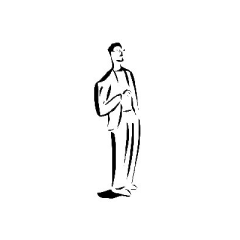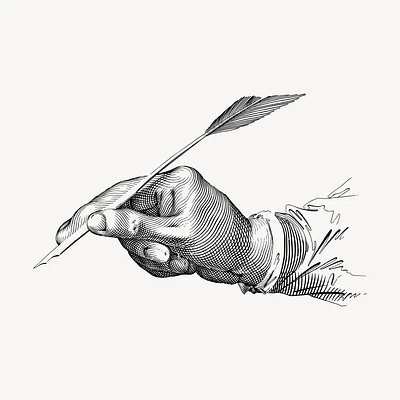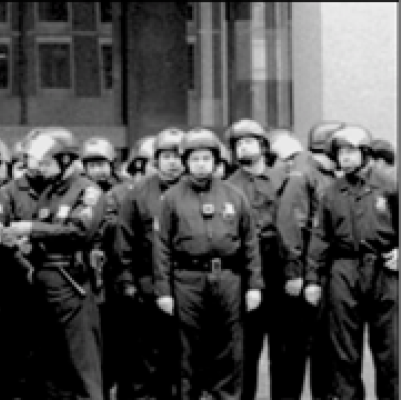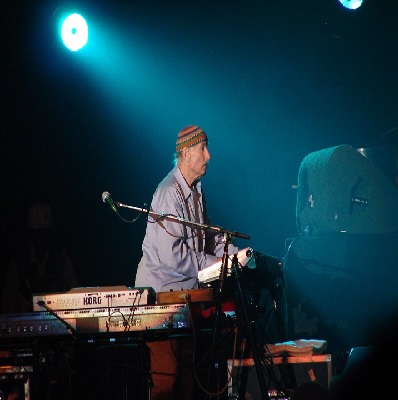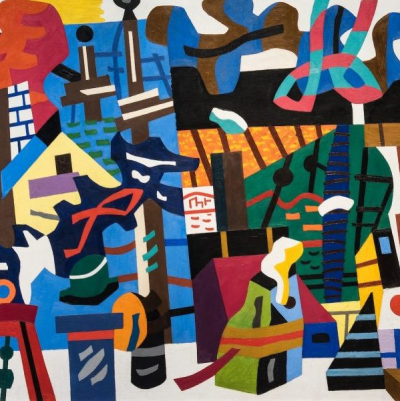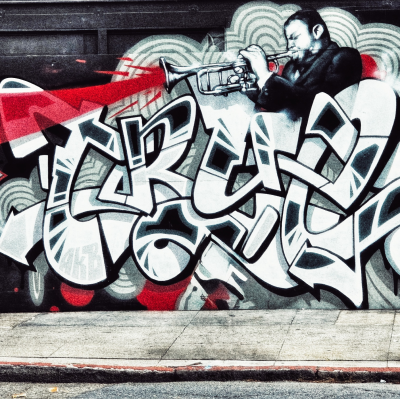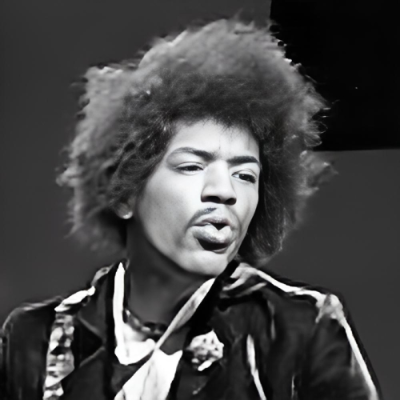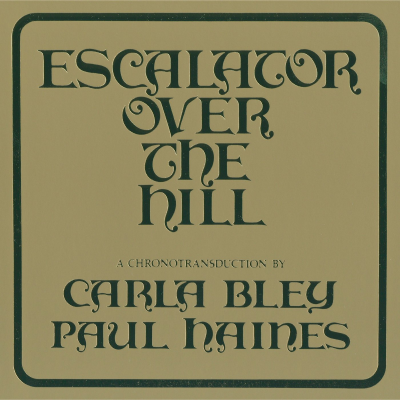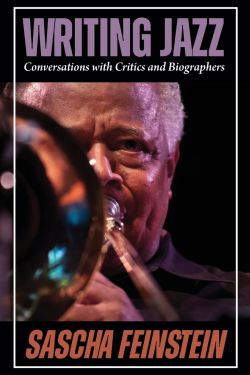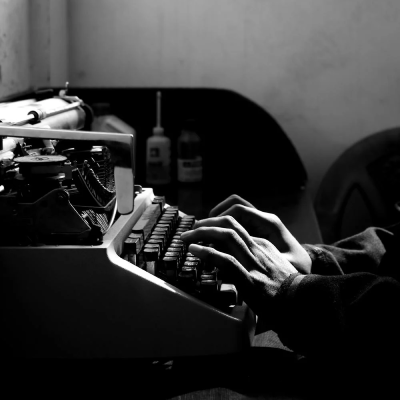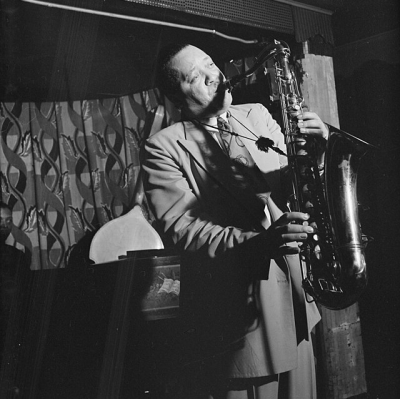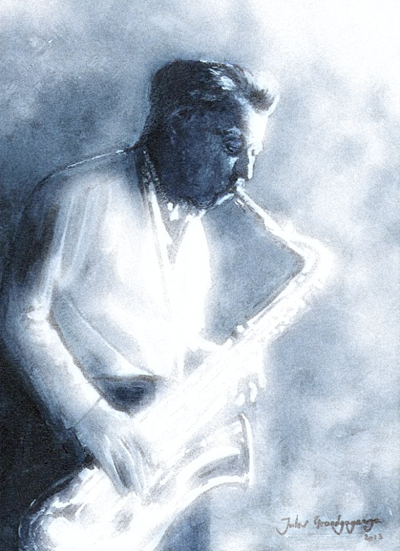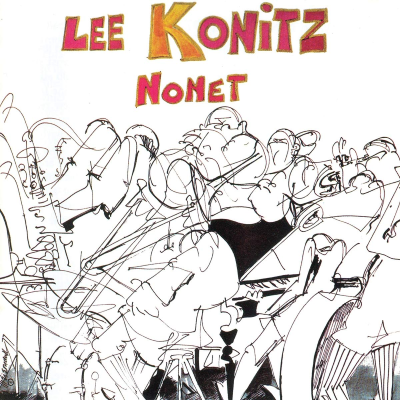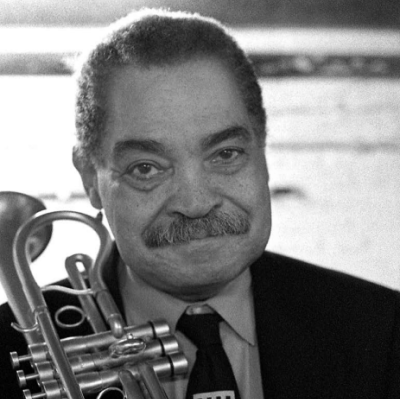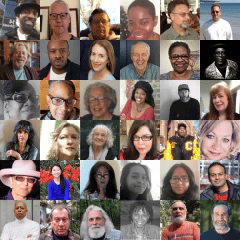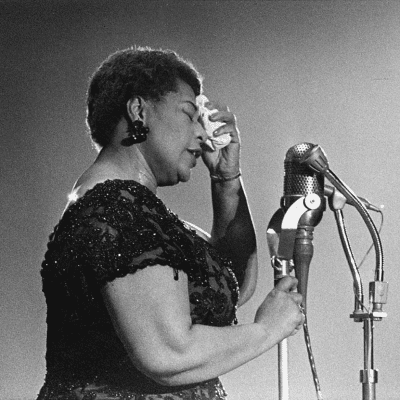.
.
Dear Readers:
…..A few years back, the Hudson Valley, New York poet Daniel Warren Brown informed me of the passing of his dear friend and jazz aficionado Al Summ, whose encyclopedic knowledge of jazz was inspirational to him. In addition to his love for the music, he created art of jazz musicians that was an outward expression of his warm spirit. I was so moved by their friendship that, in 2021, I published a brief biography of Al that was written in honor of him by Daniel and others in his circle of friends. (You can read that by clicking here).
…..In September, Daniel submitted a poem he had just written –“Bird as a Bird” – that he explained was based on a painting of Charlie Parker by Al, which he shared with me. I found the painting to be rich in symbolism and color, and a great subject for an ekphrastic poetry collection.
…..With Daniel’s consent to share Al’s art, I consequently invited interested poets to take part in the ekphrastic poem exercise that resulted in this entertaining collection of 26 poems by 26 poets. In it, you will encounter further examples of the quality of poets contributing to Jerry Jazz Musician, while also being a worthy excuse to delve deeper into the world of “Bird” himself. Daniel’s poem inspiring this exercise leads off the collection.
…..As always, thanks to the poets (and Daniel and Al), and I hope you enjoy.
Joe Maita
Editor/Publisher
.
.
_____
.
.

“Bird” – the painting by Al Summ that inspired the poets within this collection
.
.
___
.
.
.
.
Bird as a Bird
Blowing in
kinetic motion
claw feet planted
head and sax
in a strobe movement
several positions at once
his wrinkled jacket
the color of
washed out bruises
melds into
peacock tail feathers
and luminous blue wings
he is both
bird feathers
flying in sound
and a man
grounded by
the gravity of genius.
.
by Daniel Warren Brown
.
___
.
Bird Song With Bagel Please
Al Summ’s painting of Bird
reminds me of a story:
I stepped in the bakery
for coffee and a bagel.
Bird was playing in the background.
I commented favorably.
The kid behind the counter,
must have been 20 years old
said in corny reverence
“He flew in, sang for awhile
and flew away too soon”.
The way he said it
was almost funny, but he was right.
Charlie Parker, like the painting
by Al Summ, was a Garuda hybrid
half man, half bird bridging the seen
and the heard, the human form
and the gift of flight.
He sat on an April limb
and played as fast as a songbird
in midair. Almost faster than the human ear
can hear. A songbird’s grace with an alto sax .
Then just as the world sighed in awe
he was gone, flying away somewhere unknown
into Autumn skies…
As I mused about Bird’s duality
(ignoring other customers in line)
the kid he handed me my bagel,
“I can’t play jazz once the owner comes in.”
He said.
.
by Daniel Warren Brown
.
___
.
.
Cherokee
……………after “Bird” by Al Summ
More notes than feathers
The hungry bird plays the yard.
More notes than words
any man can tell his woman
.
by Miho Kinnas & E. Ethelbert Miller
.
___
.
it crumbles
to a bird ensemble
in the city of jazz
no sheet music needed
no maestro’s stand
.
by Barbara Anna Gaiardoni
.
___
.
Avis Parkeria
tufted feathered breast
Hardly! determination
the marrow filling his talons
high alto octane melody
storming out of nested leaves
into a genesis of creation
rollicked from pulsing invention
an undiscovered migration revealed
point man to the flock that followed
though he flew
seldom did he perch
other than when caged
by acceptance of the invitations
to enter constructions demons built
ultimately excused vitality overwhelms
.
by Terrance Underwood
.
___
.
Bird
I sit on the deck
and in the spruce opposite me
a bird — I find out later,
a Lesser Goldfinch —
improvises a tangled melody,
complex, yet sophisticated
and, as the notes of his tune
ascend, descend, weave
back and forth, his head
moves in time, up, down,
side-to-side until, abruptly,
all comes to an end,
and he takes flight,
leaving me regretting
that I did not study
………………Ornithology
.
by Russell Dupont
.
___
.
Birdword, Take Flight
Notes rise
on any given night
I float
wings begin to take flight
Wind holds
vibrations to unfold
to deaf
and the hearing alike
Circle
back by magnetic pull
until
Bird and word meet again.
.
by Cynthia Gallion
.
___
.
“Bird” Prays Alto Sax
Charlie Parker famed
…..Jazz moniker “Bird”
……….Virtuoso alto sax
……………None yet better heard
Improv prophetic
…..Jazz his religion
……….Self-proclaimed practitioner
……………“…devout musician.”
I n n o v a t I o n a l
…..Bebop his vision
……….Miraculous arrangements
……………Prayers his rendition
.
by Mike Mignano
.
___
.
Binaural Kaleidoscope
The binaural kaleidoscope
beating wings – fanning out
seeds, tossed from park bench near
water fountain
Listen & See
………………………Taste & Hear
Sit down at Birdland
capture the feathered colors before
they leave your mind –
In a moment,
………………………just a moment
let your brain define
LEFT…… VS ……RIGHT
BLUE
VS
PEACOCK GREEN
Pull the headphones down
lower the binocs
realize you walked through teleidoscope doors.
Wake up @ the Vanguard,
your pitch-black living room
surrounded by new sound and color
Run across the hallway
Bang on your neighbors door
wake them up in a dizzy,
angry wife calling out
from bedroom –
DON’T
tell them the name of
song & why…….
Just
Play
the
Binaural Kaleidoscope
Experience
ARE
YOU
READY
?
NOTES:
Binaural: Binaural beats use slightly different tones delivered to each ear (e.g., 100 Hz in the left, 105 Hz in the right) to create an auditory illusion where the brain perceives a third, “binaural” beat at the difference frequencies This perceived beat is thought to encourage the brain to synchronize its own electrical activity to the beat’s frequency, a process called neural entrainment, which may influence mood, focus, and relaxation. To experience binaural beats, stereo headphones are essential to ensure each ear receives its distinct tone, allowing the brain to create the binaural effect.
Kaleidoscope: an optical toy containing mirrors and colored pieces that create continually changing, symmetrical patterns of light and color when rotated. Figuratively, it refers to any constantly shifting scene, pattern, or mixture of diverse and changing elements.
Teleidoscope: a type of kaleidoscope that creates symmetrical, kaleidoscopic patterns from objects in the external environment, rather than from objects contained within the instrument.
Capture the colors: Chromesthesia is a neurological condition known as a type of synesthesia where sounds automatically and involuntarily trigger the perception of colors. Certain artists over the years are believed to have seen music in colors including…. Duke Ellington, Van Gogh, Billy Joel, Chris Cornell. If Bird did not have this condition, he certainly created music in a way that brought color out when he played
Wake them up in a dizzy/angry wife calling out: There is a story of Charlie Parker waking up Dizzy Gillespie, and upsetting his wife one night, by banding on his apartment door, to play a new song which Bird had created. This has become a common occurrence. Dizzy was upset to learn that the song which was later titled, Moose the Mooche, was named after Birds’ drug dealer. There are several stories related to this event and Bird waking up Dizzy on various occasions.
Are You Ready? A song by Canadian band, which asks, Are You Ready to Love?
.
by Martin Durkin
.
___
.
Waking with Parker’s Mood
Sometimes we wake from a long sleep
as if from a cave in the chest. We slumber
out among the blackberries and brambles,
hungry for light. Other times, birds stir inside
us, and we hear music, a saxophone, perhaps,
asking us to finally accept ourselves for who
we are. The sax becomes the body of the man,
hopping on one foot, like a prehistoric bird.
And we wake from another layer of sleep
to discover songs murmuring our veins—
tunes like “Ko Ko” and “Moose the Mooche.”
From where did they come, we wonder?
And how far our ears have traveled through
the turbulent waters of sleep to somehow hear
what we have not yet said or even thought.
There are dried bits of shredded moon still
in our eyes, weighing them down, like heavy bags
of sand, and we want to open them fully
so that we can absorb the world. But they’re stuck.
We’re stuck. Eventually, we stir, wake a bit more,
and Yardbird is there, beckoning us with the bell
of his sax like a bowl of broth. This birdman bows
into us, into his sax, which is also part of his body,
an extension of his brain. He jams and jams, wanting us
to hear what he hears—a very powerful heart
trying to keep loving the world despite this mess
and that. We could fix things, he tells us, if we could
just get the notes right. We could even fix the sun
trying to bleach out the moon. And then we wake a bit
more, fully this time it seems. And the day has begun.
Almost without us. The dog needs to be fed.
The counter wiped. The birds out back need water
and seed. And there it comes again, as if flowing
in our veins: “A Night in Tunisia,” “Donna Lee,”
and especially “Parker’s Mood.” And our mood. If we could
just shake it and come fully unto our day. But the birds
are there, out back by the willow. Bits of dried fruit
from the milk vetch bush being torn apart, the birds
on it almost eating us. And something—yes—is eating us.
But from inside. Perhaps from sleep, or its lack.
If we could just dump this mood—Parker’s mood—we could
finally play music too. Vast musics of hello, and touch,
and here’s a shoulder to lean on. O Charlie. Good morning,
we say. We want to lean on you. Lean on the calming jitter-step
of your sax. We hope you are not mourning. Forget the pain,
Charlie. Rejoice. Raise your alto to the ravenous raucous of birds.
You remain with us—each hour, each day. When we wake, when
we sleep, you wing-beat our chest. You keep flying into us and through.
.
by George Kalamaras
.
___
.
The Mythical Bird
…………………(i.m. Al Summ)
A recurring style
reinventing sweet regrets
with an invisible
moon watching
those fragile
feathers of blue and green
appearing with inflamed
notes from a memorable,
luminous summer,
his poetic saxophone
on display and listened
to by reflective
birds of light
over and over again.
.
by Byron Beynon
.
___
.
Bird
Over this heaped blue pond
yawns the capricious morning;
is where I hear orinthological trajectories
swinging with majestic arian precision.
Swaths of empathetic arpeggios
bursting cerebral and visceral
from this significant hepster’s
scythe-like horn,
wistful, too, wispy
flaccid tulip pedals waft,
newborn and mother a harmony
bawling in blush.
Strut and perch
your tailor pressed plume,
akimbo, songster thrush thrashing thickets
of oppression; a soaring articulate embouchure
in impetus nocturnal flight
crescendo, diminuendo
melding with the pelting, staccato rain.
.
by Rob Yedinak
.
___
.
Anticipating Flight
Is now the time
for a different altitude —
Improvisational patterns
& blistering speed?
We take off
all that is non-essential / we soar
while the day is still early.
“…there’s no boundary line to
art,” you say.
& is there anything
that you can’t
play?
Revolutionary jazz!
Charlie Parker’s early bird / free
bird / chasin’ the blues away
jazz.
O bebop Bird!
Come & visit my yard.
If our wings are the same
shade of blue
can I fly, too?
.
by Connie Johnson
.
___
.
Splenetic Spirit
Bird
Imbued in blue undertone
A ferocity of stillness
Well suited to the stage
He takes off over our heads
Looking angelic in flight
As he plays to the dizzying heights
Breaching the stars
Belching out music as if merely breathing
Soaring splenetic spirit
As if he were the first Jazz player and the last.
.
by Anthony Ward
.
___
.
Five Faces of Charlie Parker
When I hear Charlie Parker blowing his long
lyrical riffs that capture the effervescence
of life invincible and everlasting,
I think of Jack Kerouac typing his long lyrical
novel On the Road.
Kerouac who saw Parker as Buddha—
But I think he also saw him as five persons:
Bird. Yard bird. Junkie. Genius. Friend.
He took jazz to places it hadn’t been.
In the end, he inspired musicians, composers,
painters, poets, stars, as well as humble
listeners—in mores and what have you.
.
by DH Jenkins
.
___
.
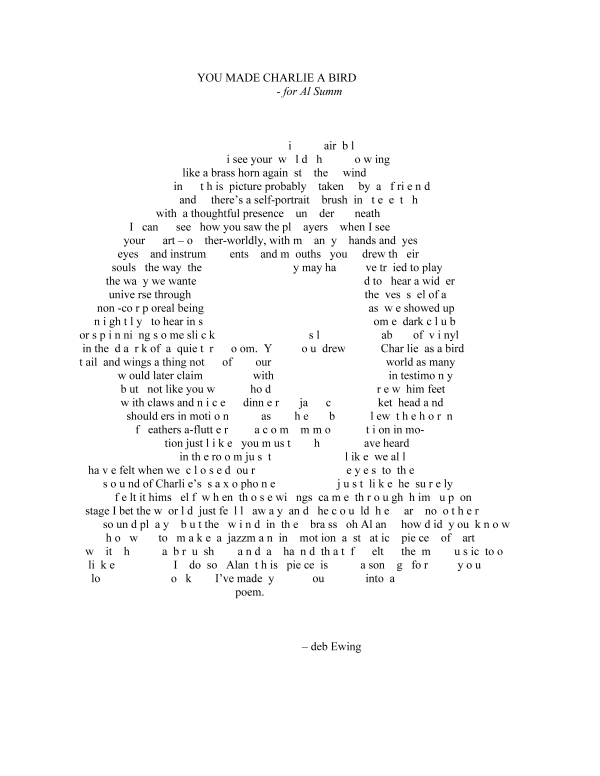
.
___
.
A Thank You Note to Charlie “Bird” Parker
You knew how to swing
but it wasn’t your thing
to play for the jitterbug crowds.
Your sax knew, too–
there was more depth
to you and the tunes
that raced through your head.
You wanted to fly
like the Bird that you were,
uncaged, unmatched
by mere mortals.
Your up-tempo vision
virtuosic technique,
trembled your feathers
by unruly beats.
Bebop began in the heat
of the night when Minton’s
was home to the guys
like Dizzy and Monk
and others who jammed,
created for listening not dance.
Your genius brought fame
but tragedy, too.
A marriage to heroin
ended in flames.
Yet your name lives
beyond a scant 34 years.
Birdland still thrives,
bebop survives.
Thank you, Charlie.
.
by Patricia Joslin
.
___
.
Bird Gets the Song
Oh man, he’s back.
Our yard bird.
We call him Charlie.
Most of the other birds
start their chorus
at sunrise or sunset,
but this one decides
to let loose around midnight.
He’s out there again
scrounging around for a sound,
and, before long, those chirping
fast tempos will fill up the night.
Under the trills and ornamentation
we can hear his basic call—
bebop, bebop, bebop.
.
by Laura Trigg
.
___
.
At Risk
Convention is at risk
to the creative consciousness.
Newly found contrafacts:
the conjure of improv cataracts,
that see those yardbirds,
who look mighty plump.
While the raw numbers
can leave you cold,
the tones inside them,
scale and bebop,
revealing meanings only the bird
can compose on the fly.
Adding fuel to the alto,
some nights, at some studios,
can lead to signs that only the driver
can see before the soloist leads off-road,
and dizzy, can’t help,
nor can gravelly percussions
with extraordinary interpolations
that reinvent the wind in an alto.
Drawing upon too much,
refueling can lead to overflow
and quintuple vision,
like some Kafkaesque Metamorphosis,
where the bird really thinks he can fly,
until he prematurely grounded
by the very air he needed to blow.
.
by Michel Krug
.
.
___
.
.
Fledgling
The neighbors tell his mom to put a lid
on that kid and his damn horn
or better yet, why not just pack up
and move somewhere far away.
They have no ears for melody, harmony
or rhythm. They only hear cacophony:
the clamor of squabbling crows,
the wailing of black-veiled widows.
They do not know that only practice
practice practice leads to perfection.
They do not know that only living out
the sound will permit it to be made exquisite.
They do not know how much he feels the light
when dawn is still in shadow,
or how he is charged by the light
of his own dazzling inner life.
In many ways it’s difficult to explain
why he plays and plays and plays.
His mother has stopped trying.
No point in asking a bird why it flies.
.
by Salvatore Difalco
.
___
.
A Bird Lands in The Hudson Valley
Bird lands with aquamarine wings
in Al Summ’s yard, collector, healer,
keeps him alive. Al speaks the same
language as the Bird. He understands.
He prefers seeds—Bebop, spicy hot.
A bird who blows his new radical songs
in a saxophone. He perches on khaki
canvas. Al the artist strokes his belly.
Bird’s feet spread in confident stance,
where his sounds become fat morsels
of bread to feed the Soul of men. “What
kind of Bird are you?” Ruffling melodies,
arising notes never heard before. Al rides
his bicycle to New Paltz, with a knapsack
asking New Yorkers, “Hey man, take a listen
to this Bird!” Turquoise feathers glowing. Bird
playing his golden instrument. “Growling for Pree?”
Daughter in heaven, haunting his chest, where notes rest.
“Hey man, can you listen to his hottest improvisation?”
“This Bird has taken flight, landing in my yard. Blowing.”
.
by Jerrice J. Baptiste
.
___
.
Cerulean Bird and His Horns
Strains of “Ko-Ko” vibrate
as Charlie Parker clasps the sax,
feet firmly fixed but wings
readying him for encores.
Hipster icon seems composed in dress,
as heart joins hands on his horn.
Sharp as a bluejay, this bebop
pioneer carries jazz to another level,
with fast tempos and improvisation,
creating a complex art form.
Revel in his world, bite into “Scrapple
From the Apple,” major in “Ornithology.”
“Now’s the Time.”
.
by Amy Barone
.
___
.
Charlie Parker
The yardbird’s
funky bebop
crackles from the bell
of an alto sax
which charlies
and parkers
in a soulful sway
against the world
too cold to cast
a cold look.
.
by Jianqing Zheng
.
___
.
Bird!
There’s Bird
bent over pigeon-like
blowing three horns
bowing to the Trinity
as he swallows air
that pushes the horns
to send forth notes
which ultimately
knock on heaven’s door
as he bows
in acknowledgment
of faith and creative breaths
.
by Jim Mello
.
___
.
Hornithology
Who’s a pretty boy then?
My tequila mockingbird,
dark days and nights in the Village Vanguard
with four sidemen of the puckerlips,
feathering bewildered bebop,
perched on a high octave,
phoning in your notes,
no mere mumbledribble,
how you flap and flutter.
I know why the caged Bird swings.
Who was it clipped your wings?
The ebb and flow of blow,
Yardbird, the quintessential, charismatic
Judas to the semitones’
twelve apostles of the chromatic
caught scrappling for a rebop.
Ah leu cha! Just give us the contrafacts.
The revolution will not be harmonised.
Clap hands, here comes Charlie
and we’ll all get well tomorrow.
.
by Isabel White
.
.
_____
.
.

Jerrice J Baptiste is an artist, poet, author of nine books. Her most recent book, Coral in The Diaspora was published by Abode Press (August 2024). She’s been nominated twice for a Pushcart Prize by Jerry Jazz Musician 2024 & Abode Press 2025, and as Best of The Net in 2022 by Blue Stem. Her writing has been published or is forthcoming in Mantis, One Art: Poetry Journal, Neologism Poetry Journal, The Write Launch, The Banyan Review, The Yale Review, The Lake, Artemis Journal and hundreds of others. Her poems & collaborative songwriting are featured on the Grammy nominated album-Many Hands: Family Music for Haiti
.
.
___
.
.

Byron Beynon lives in West Wales. Collections include The Echoing Coastline (Agenda Editions) and Where Shadows Stir (The Seventh Quarry Press). His work has also appeared in several anthologies including the human rights anthology In Protest (University of London and Keats House Poets and Winter in America (Again (Carbonation Press).
.
.
___
.
.

Amy Barone’s poetry collection, Defying Extinction, was published by Broadstone Books in 2022. New York Quarterly Books published her book, We Became Summer. She wrote chapbooks Kamikaze Dance (Finishing Line Press) and Views from the Driveway (Foothills Publishing). Barone belongs to the Poetry Society of America. She lives in NYC.
.
.
___
.
.

Daniel Warren Brown has loved jazz (and music in general) ever since he delved into his parents’ 78 collection as a child. He is a retired special education teacher who began writing as a senior. He always appreciates being published in journals and anthologies. At age 72 he published his first collection Family Portraits in Verse and Other Illustrated Poems through Epigraph Books, Rhinebeck, NY. Daniel writes daily about music, art and whatever else catches his imagination.
.
.
___
.
.
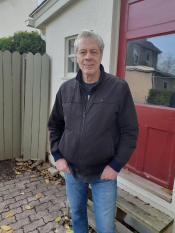
Poet and storyteller Salvatore Difalco lives in Toronto, Canada. He is the author of five books including Black Rabbit & Other Stories (Anvil Press). Recent journal appearances include Cafe Irreal, Fictive Dream, and E-ratio. His short story “Bluesette” was the winning entry in the 67th Jerry Jazz Musician Short Fiction contest, which you can read by clicking here.
.
.
___
.
.

Russell Dupont, poet, artist, novelist, has published in the albatross, Spectrum, The I, For Poets Only, The Anthology of South Shore Poets, Re-Side, Oddball, Jerry Jazz Musician, Adelaide Literary Magazine, Rye Whiskey Review, Last Stanza Poetry Journal, the new post-literate, DADAKU, One Sentence, Verse-Virtual, Lothlorien Journal, Pick-Me-Up Poetry, Poetry Porch, Concrete Formalist Poetry and the Northern New England Review. He is the author of three novels: King & Train, Waiting for the Turk, Movin’ On; a collection of short stories, Norman Mailer Walks Into a Bar; three collections of poetry: Winter, 1948, Establishing Home Plate, and Jazz at the Point.
He is also the author of two non-fiction chapbooks — Up in Wisconsin: Travels with Kinsley, and There is No Dam Now at Richford. Examples of his work have been collected in the Archives of UMass Boston. His journalism has appeared in The Dorchester Community News, The Melrose Free Press and The Patriot Ledger.
.
.
___
.
.
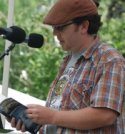
Martin Durkin is a writer currently living in Plymouth MA. To date he has published three books of poetry, and has been included in dozens of anthologies. In 2025 his work will be found in Massachusetts Bards, Otherwise Engaged, and an upcoming anthology entitled, I’ll Get Right On It: Poems on Working Life in the Climate Crisis, by Roseway Publishing. Durkin has had several pieces of his work turned into videos, and art prints for various universities and colleges have been part of a video series entitled, SPEAK IT!, where he delivered poetry about being a military spouse.
.
.
___
.
.
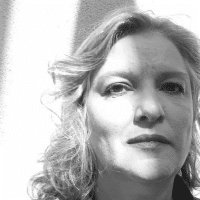
debora Ewing is still doing all the same old things: peer-reviewing for Consilience Science-based Poetry Journal, typesetting for Igneus Press, painting tiny things on coins, the usual. Her mission statement remains “Art is War.” You might find deb’s short sci-fi at Coffin Bell Journal in July, or her physical person at FAR-West 2024 in Woodland Hills, CA, in October. Follow @DebsValidation on Twitter and Instagram.
.
(Editor’s Note: debora’s short story “Coloring Outside the Lines” was the first winning story in the Jerry Jazz Musician Short Fiction Contest, published in October of 2002. The contest is currently in its 67th edition)
.
.
___
.
.
Barbara Anna Gaiardoni is an Italian pedagogist and author. She is among the winners of the 7th Basho – an international English Haiku Competition. She has been recognized in The Mainichi’s Haiku in English Best list for 2023 and 2024 and received an Honorable Mention at the Fujisan Tanka Contest 2024. Her Japanese-style poetry has been published in 260 international magazines and translated into 12 languages.
To read her publications, click here
.
.
___
.
.

At 19, Cynthia Gallion became a jazz enthusiast while growing up in Southern California. Now a nurse, mother and grandmother, she has been a North Carolinian for the past 30 years.
.
.
___
.
.
.

DH Jenkins’ poems have appeared in Jerry Jazz Musician, Kelp Journal, and The Ekphrastic Review. His new book of poetry, Patterns on the Wall, is available on Amazon.com. He lives in New Zealand.
.
.
___
.
.
.
 Connie Johnson has multiple Pushcart Prize nominations for poetry. A California-based writer, she has authored Everything is Distant Now (Blue Horse Press) and I Have Almost Everything (Boats Against the Current). In a Place of Dreams, her digital chapbook (containing audio readings/personal narrative), was published by Jerry Jazz Musician. Click here to view it.
Connie Johnson has multiple Pushcart Prize nominations for poetry. A California-based writer, she has authored Everything is Distant Now (Blue Horse Press) and I Have Almost Everything (Boats Against the Current). In a Place of Dreams, her digital chapbook (containing audio readings/personal narrative), was published by Jerry Jazz Musician. Click here to view it.
.
.
___
.
.
Patricia Joslin is a retired educator who was raised in the Midwest and now lives in Charlotte, NC. Poems have been published in Kakalak, Tipton Poetry Journal, and by the NC Poetry Society. Her chapbook, I’ll Buy Flowers Again Tomorrow, a collection of poems about loss and healing, was published in 2023 by Charlotte Lit Press. She loves live jazz, solo travel, and the serenity of woodland hikes.
.
.
___
.
.
.
photo by Jim Whitcraft

George Kalamaras is former Poet Laureate of Indiana (2014– 2016) and Professor Emeritus at Purdue University Fort Wayne, where he taught for thirty-two years. He has published twenty-seven collections of poetry, eighteen full-length books and nine chapbooks. He recently won the 2024 Indiana Book Award for his book To Sleep in the Horse’s Belly: My Greek Poets and the Aegean Inside Me, a 300-page chronicle of George’s Greek ancestry—literary, artistic, and familial (Dos Madres Press, 2023).
.
.
___
.
.

Miho Kinnas is a poet and translator living in Hilton Head Island, South Carolina. Her latest book is Waiting for Sunset to Bury Red Camellias (Free Verse Press, 2023). She has published a book of poems in collaboration with E. Ethelbert Miller, We Eclipse into the Other Side (Pinyon Publishing).
.
.
___
.
.

Michel Steven Krug is a Minneapolis poet, fiction writer, former print journalist from the Johns Hopkins Writing Seminars, and he litigates. His poems have appeared in New Verse News, Poetica Publishing, Liquid Imagination, Blue Mountain Review, Portside, and many others.
.
.
___
.
.
photo by Alice Mello
 Jim Mello is a counselor and clinical supervisor in the substance use disorder field. He’s also a part time clergy person, and has taught in the University of Maine system as an adjunct professor. Besides People, his passion is music and he.became a poet by default. He has three books published, two by Moon Pie Press, and one self-published.
Jim Mello is a counselor and clinical supervisor in the substance use disorder field. He’s also a part time clergy person, and has taught in the University of Maine system as an adjunct professor. Besides People, his passion is music and he.became a poet by default. He has three books published, two by Moon Pie Press, and one self-published.
.
.
___
.
.

Mike Mignano, retired Ocala, FL.
Hometown Ithaca, NY. Interests
include: history, travel, guitar,
choral singing, viewing sports
attending theatre and reading
poetry.
.
.
___
.
.

E. Ethelbert Miller is a poet and literary activist living in Washington D. C. His latest book is How I Found Love Behind the Catcher’s Mask: Poems (City Point Press, 2022) and he was a nominee for a Grammy in the 2023 Spoken Word Album category with his Black Men Are Precious album.
He has published a book of poems in collaboration with Miho Kinnas, We Eclipse into the Other Side (Pinyon Publishing).
.
.
___
.
.
Laura Trigg is a retired physician currently living in Missouri and enjoying caring for her granddaughter while her parents are at work. A writer since childhood, she has had poems published in several journals, including Encore, Delta Poetry Review, Medicine and Meaning, Months to Years, and Jerry Jazz Musician
.
.
___
.
.
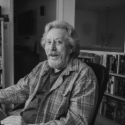
Terrance Underwood is a retired Gas Turbine Package Engineer whose career offered opportunities to work all over the world. A devoted jazz enthusiast, his first memory operating a mechanical devise was a 4-speed spindle drop record changer for his father’s collection of 78s.
Click here to read Proceeding From Behind: A collection of poems grounded in the rhythmic, relating to the remarkable, by Terrance Underwood
Click here to read With Ease in Mind, a collection of poems by Terrance Underwood
.
.
___
.
.
Anthony Ward chooses to write because he has no choice. He writes to get rid of himself and lay his thoughts to rest. He derives most of his inspiration from listening to classical music and jazz since it is often the mood which inspires him. He has recently been published in Jerry Jazz Musician, Synchronized Chaos, Literary Yard, Mad Swirl, Shot Glass Journal and Ariel Chart.
.
.
___
.
.
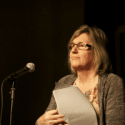
Isabel White has performed across the UK, at Shakespeare & Co in Paris and in Rotterdam. She was twice runner up in the BBC Radio 3 Proms Competitions; a finalist in nine others and poet-in-residence for organizations working with marginalized communities. With three full collections and a pamphlet under her belt, Isabel’s poetry has been widely published – in 18 books and journals to date. Isabel founded performance collective Alarms and Excursions in 2009.
.
.
___
.
.
Rob Yedinak’s previous publishing credits of over 20 years ago include Hook and Ladder, Lucid Moon and Medicinal Purposes. He has only recently started writing again because of certain inspirations, but against his better judgement. He writes vignettes fraught with neurosis, perversion, noir, contrast, relief and an occasional inside joke only the author would laugh at.
.
.
___
.
.
Jianqing Zheng’s poetry books include Visual Chords, The Dog Years of Reeducation, A Way of Looking, and Dreaminations. He teaches and lives in the Mississippi Delta.
.
.
_____
.
.
Click for:
Monk, as seen by Gottlieb, Dorsett and 16 poets – an ekphrastic poetry collection
True Jazz Stories: A remembrance of jazz aficionado Al Summ
More poetry on Jerry Jazz Musician
War. Remembrance. Walls. The High Price of Authoritarianism – by editor/publisher Joe Maita
“My Vertical Landscape,” Felicia A. Rivers’ winning story in the 69th Jerry Jazz Musician Short Fiction Contest
More short fiction on Jerry Jazz Musician
Information about how to submit your poetry or short fiction
Subscribe to the (free) Jerry Jazz Musician quarterly newsletter
Helping to support the ongoing publication of Jerry Jazz Musician, and to keep it commercial-free (thank you!)
.
___
.
.
Jerry Jazz Musician…human produced since 1999
.
.
.





